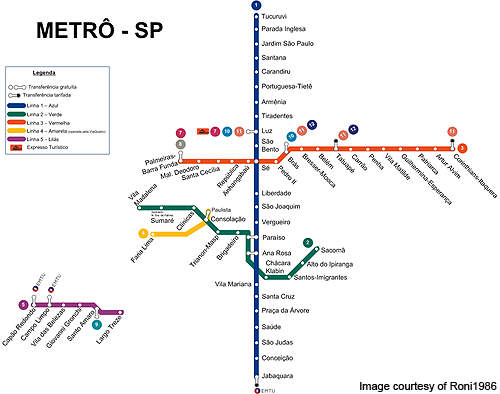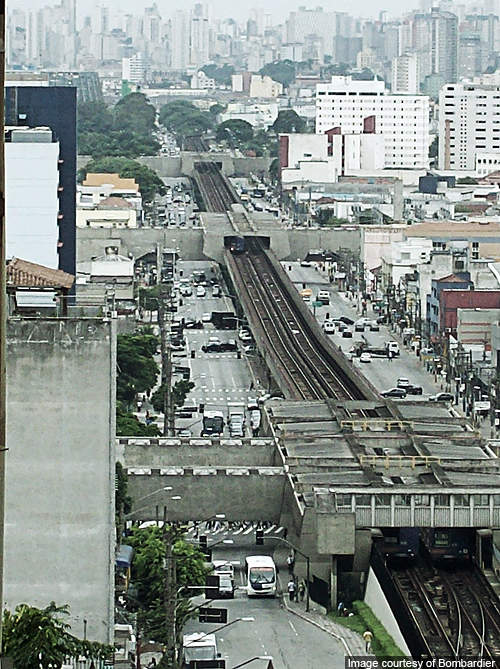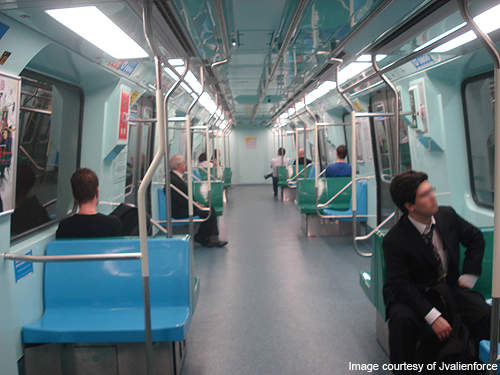The São Paulo Monorail system is a 24km-long rail line that will operate between Vila Prudente and Cidade Tiradentes.
Also known as Expresso Tiradentes, the new line will serve as an extension of metro line 2 of the Companhia do Metropolitano de São Paulo (CMSP / São Paulo Metro). The project is estimated to cost $1.6bn. It is expected to open by 2014.
The monorail system will reduce travel time between the two destinations from two hours to 50 minutes benefiting 500,000 passengers a day.
The project has been awarded to The Express Monotrilho Leste Consortium (Eastern Express Monorail Consortium) led by Bombardier. The total value of the contract is $1.44bn of which Bombardier’s share is $1.4bn.
The other members of the consortium are Brazilian civil construction firms Queiroz Galvão and Construtora.
Lines and routes
São Paulo has five metro lines – Line 1 (Blue), Line 2 (Green), Line 3 (Red), Line 4 (Yellow) and Line 5 (Lilac). The new monorail system will be an extension of the 14.7km-long metro line 2 currently operating between Vila Madalena and Vila Prudente with 14 underground stations.
Construction of this line began in January 1991.
Vila Prudente and Tamanduateí are the latest stations added to the route in August and September 2010 respectively.
The Expresso Tiradentes will be a further 24km-long extension from Vila Prudente to Cidade Tiradentes with 17 stations in between.
Rolling stock
The project will feature Bombardier’s INNOVIA 300 system, which will transport 40,000 passengers per hour per direction. The technology will be complemented with the company’s CITYFLO 650 automatic train control technology to enable driverless operation of the trains.
Bombardier will design and supply electrical and mechanical equipment for the extension. It will also supply 54 seven-car trains and provide project management, systems engineering and integration, testing and commissioning for new trains and signalling systems.
The vehicles will be engineered, designed and tested at Bombardier’s site in Canada. The first few cars will be manufactured in Pittsburgh, USA and the others in Brazil at the manufacturer’s plant in Hortolândia.
The INNOVIA Monorail 300 system operates at a top speed of 80km/h on 750V DC power. It can be configured in two-eight car sets to transport 1,000 passengers per trip.
The Monorail 300 system has an aluminium body, steel under frame and a composite end cap. Each car has two bi-parting doors per side and a roof mounted twin heating, ventilating and air-conditioning (HVAC) unit.
It is the first monorail with an inter-car walkway to provides free passenger movement and enhances passenger safety. The flexible seating arrangement allows for customer specific seating.
The INNOVIA 300 system technology uses slender guide beams for structural support and vehicle guidance. This allows for less obstructive and easy-to-construct aerial guide way structures, which can be constructed off-site and assembled in a short time.
Signalling and communication
The INNOVIA 300 trains will be equipped with a CITYFLO 650 automatic control system capable of reducing headway as low as 75 seconds. The control system is used for driverless or unattended train operations for moving advanced metro and airport people movers.
It features a communications-based train control (CBTC) moving block system, vehicle automatic train protection (VATP), automatic train protection (ATP), automatic train operation and train detection through radio transmissions of train positions.
The EBI Screen control system enables continuous tracking of the trains. This system can be complemented with the optional function of supervisory control and data acquisition (SCADA). It can also be connected to auxiliary systems such as passenger information displays, CCTV, public announcements, radio and telecoms.










